Is there a place for chatbots in B2B?

While it’s easy to dismiss chatbots as a B2C marketing fad, we believe it’s time B2B marketers started considering the potential of chatbots for their organisations.
2016 was a big year for chatbots. Over 33,000 chatbots have now launched on Facebook’s Messenger platform alone. We saw Microsoft launch a soon-to-turn racist, misogynist, AI chatbot named Tay on Twitter. And IBM has mooted the idea that a chatbot based on their Waston AI will launch this year.
Analysts at CCS Insights went as far as predicting that bots will overtake apps in usage and traffic volumes by 2021 – essentially changing the way we interact online. Bots have the potential to be big business. Yes, even in the business to business world.
Let’s start by understanding what a chatbot is and why they’re currently the talk of the town.
What are chatbots, A crash course
Google defines a chatbot as “a computer program designed to simulate conversation with human users, especially over the Internet”. A chatbot essentially uses rules or machine learning to effectively mimic human conversation in order to deliver a service, with the experiences ranging from functional through to fun.
A number of chatbots are available in common messaging services like Facebook, Twitter, Slack, Telegram, Kik and over SMS.
Why are they becoming more popular?
Chatbots aren’t a new technology. In 2000, ActiveBuddy created SmarterChild, an instant messaging bot with instant access to news, weather, stock information, movie times, yellow pages listings, and detailed sports data, as well as a variety of tools (personal assistant, calculators, translator, etc), but Smarterchild was ahead of its time, buyers didn’t understand the need for consolidating online services nor did they live on messaging apps so it struggled to gain traction.
Only now in 2017 are we ready, well… almost ready, for chatbots. Private messaging apps recently surpassed social media as the #1 way we communicate. What’s interesting, and perhaps the true reason for their rise in popularity, is the wider range of technology developments. Advances in AI, machine learning, natural language processing and enhanced computer processing power have enabled developers to build better chatbots. Now users can engage in much more natural conversation with bots in applications they already use on a daily basis.
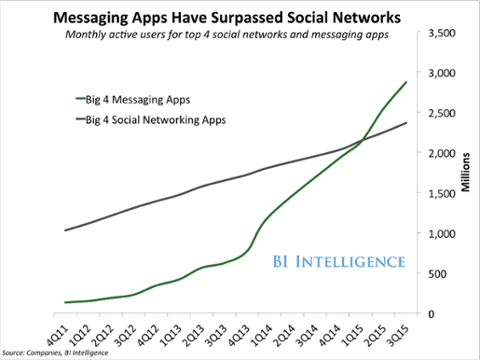
Applications of chatbots – lessons we can learn from B2C
A number of the examples below are from the B2C world but bear with me… the rise of messaging platforms and chatbots is set to mimic the social media explosion, from personal use (Siri, Cortana and Alexa), then to B2C and finally through to B2B. So let’s sit back and learn a thing or two.
Cutting customer waiting times
Perhaps the most obvious initial use of a chatbot is to reduce customer frustration by answering customer questions faster. Taking this one step further, Shell has been piloting IPSoft’s Cognitive Human Agent, Amelia, to handle calls, emails and enquiries at the top of the purchase funnel. The bot engages callers in natural conversation,relating interactions to previous conversations it has had with that person and then passing enquiries over to humans call handlers at the appropriate moment.
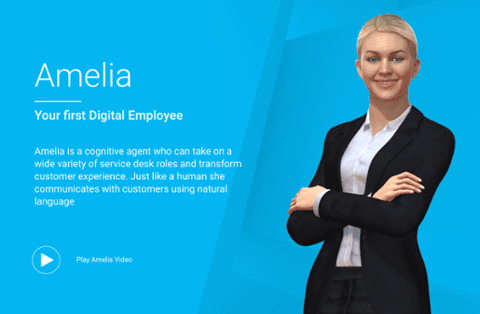
Connecting channels
For brands, the implementation of a chatbot is about working smarter – chatbots can connect across channels, applications and devices to deliver an omnichannel experience. Some of the best B2C examples of great omnichannel chatbot experiences come from the airline industry, whether that’s booking a flight using Kayak’s Facebook Messenger chatbot or KLM’s chatbot.
Rethinking content publishing
A personal favourite of mine is Quartz, the conversational news app. Your news is delivered in a messaging-style interface, sort of like texting. You receive snippets of the news with the option to find out more or skip to the next story. In a previous post we explored its potential as an internal communications tool but the potential applications for education and communication are enormously broad.
Providing faster, more efficient access to information
While I was impressed by Amelia, the relationship-driven nature of B2B puts barriers in the way of the implementation of a chatbot; it’s important not to see them as a replacement for human interaction, but instead a way of making that interaction more useful.
One chatbot that’s making waves in B2B is HubSpot’s Growthbot. HubSpot has connected a variety of marketing systems (like HubSpot, Google Analytics and others) to provide quick, easy access to information and services.
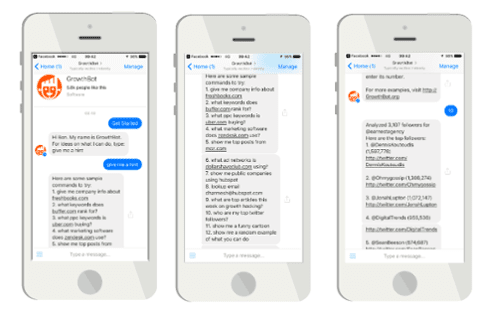
So, is there a place for chatbots in B2B?
After some research and head-scratching, I’ve gathered some potential applications of chatbots I can see making an impact in B2B:
Potential Use Cases of chatbots in B2B
1) Customer education
A customer service agent such as Amelia at the very top of the purchase funnel to answer prospects questions, (just as they would seek advice from an expert advisor), or after purchase to add value such as the KLM chatbot (check in and flight information).
A product wizard assisting in tailoring solutions to consumers needs based on data would be a simple version of Amelia that would still offer value.
2) Insight
Internally to remain ahead of competitors by monitoring and answering questions on competitors’ digital campaigns, messaging and activity based on performance marketing data.
Testing campaign messaging, tone of voice, creative executions and value propositions via sentiment analysis and conversation mining techniques to inform future campaigns.
3) Sales enablement
Imagine up to date sales enablement PDFs that constantly evolve to offer more value and give you the optimum information, imagine that PDF is actually Brian, your internal AI chatbot that analyses customer enquiries, complaints, sales conversions and product information to give you the optimum answer to any question you ask.
4) Internal education
Widening the horizon and stepping back from sales. How about replacing those boring weekly newsletters with a conversational bot keeping you updated on the latest and greatest across your business. A great example for inspiration is the Quartz app, delivering the news in a message format.
Where the value lies
The real value of chatbots lie in what you do with the data from conversations with customers or prospects. With bots we can analyse how consumers interact; conversation length, sentiment analysis and nudges that lead to particular behaviours to understand the customer journey.
Optimising to these data points around the consumer rather than optimising to technology led datapoints truly enhances the customer experience, completing the loop on engagement and sales.
Want more?
Check out our podcast or read how to build a bot below …
Our very own Earnest labs has launched a new podcast called ‘Somehow Inevitable’ to look into some of the unstoppable, but sometimes unseen, forces at work in our society. Check it out here (it’s good, promise!
In our first episode, we’re looking at how technology can be used by businesses to do real good in the world, simply by encouraging subtle changes to customer behaviour.
Bonus material – Building a chatbot:
Rule based chatbots – building a rule-based chatbot (if user says “cats”, show images of cats) takes an understanding of logic, a copywriter and some patience. We gave it ago and created a Facebook Messenger chat bot for using Chatfuel. (Other both platforms are available; Botsify, Flowxo).
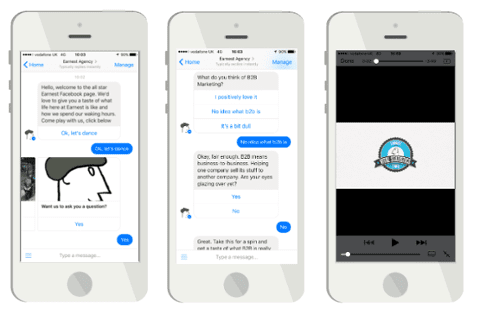
Some examples worth trying include My news bot , Health tap (quick answers from ‘Doctors’) and finally a decent attempt at a useful B2B bot by Hubspot.
Machine learning chatbots – are much more complex and use artificial intelligence, they understand language not just the commands pre-set by the creator. Microsoft went from good, to bad, to damn right ugly in 24 hours with Tay, the ‘innocent’ chatbot modelled to speak like a teenage girl in order to improve the customer service of their voice recognition software.
“Unfortunately, in the first 24 hours of coming online, a coordinated attack by a subset of people exploited a vulnerability in Tay.”

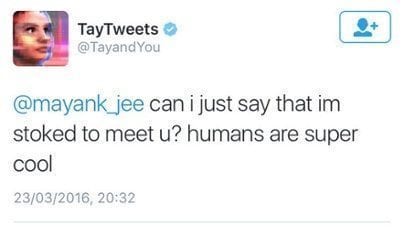
Offending others in return for attention, you might argue that Tay’s behaviour is actually proof of Microsoft’s success, they aimed to create a bot to mimic millennials on Twitter and didn’t fall too short.
